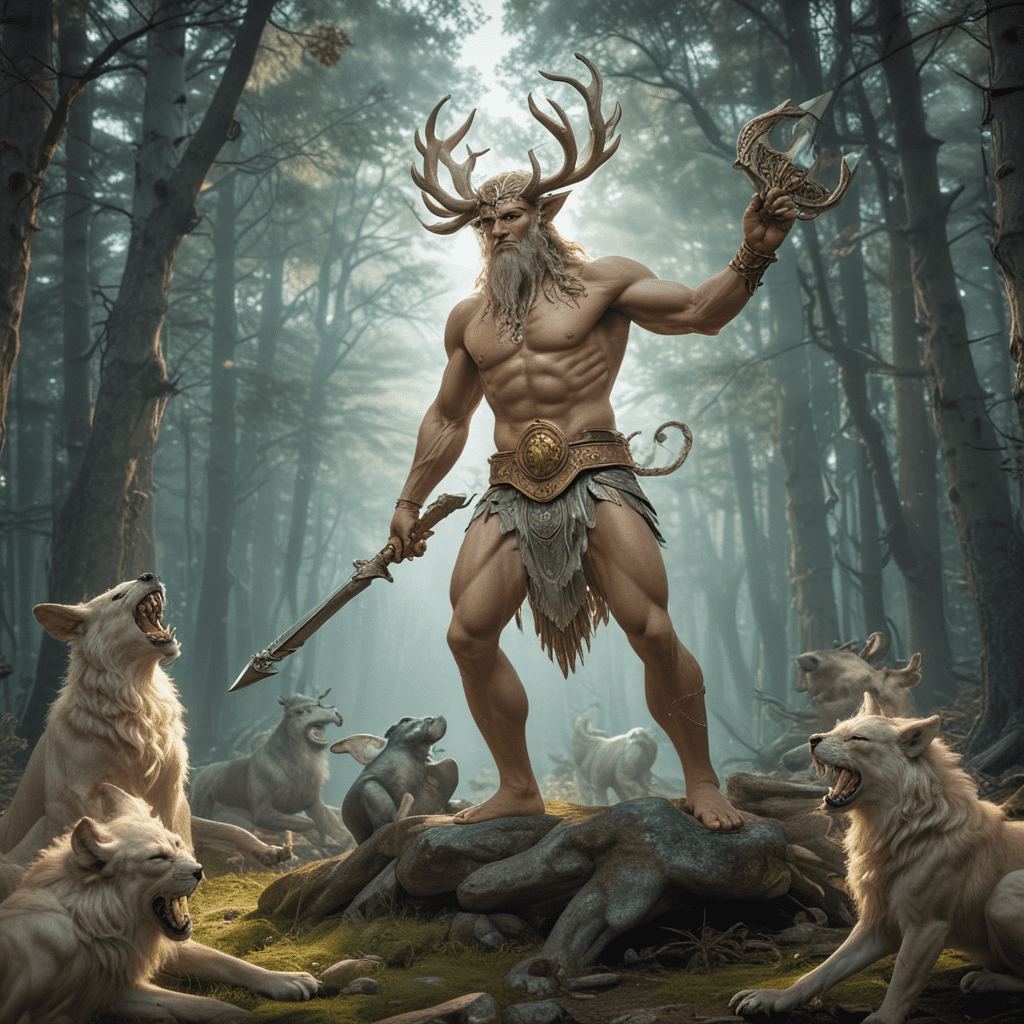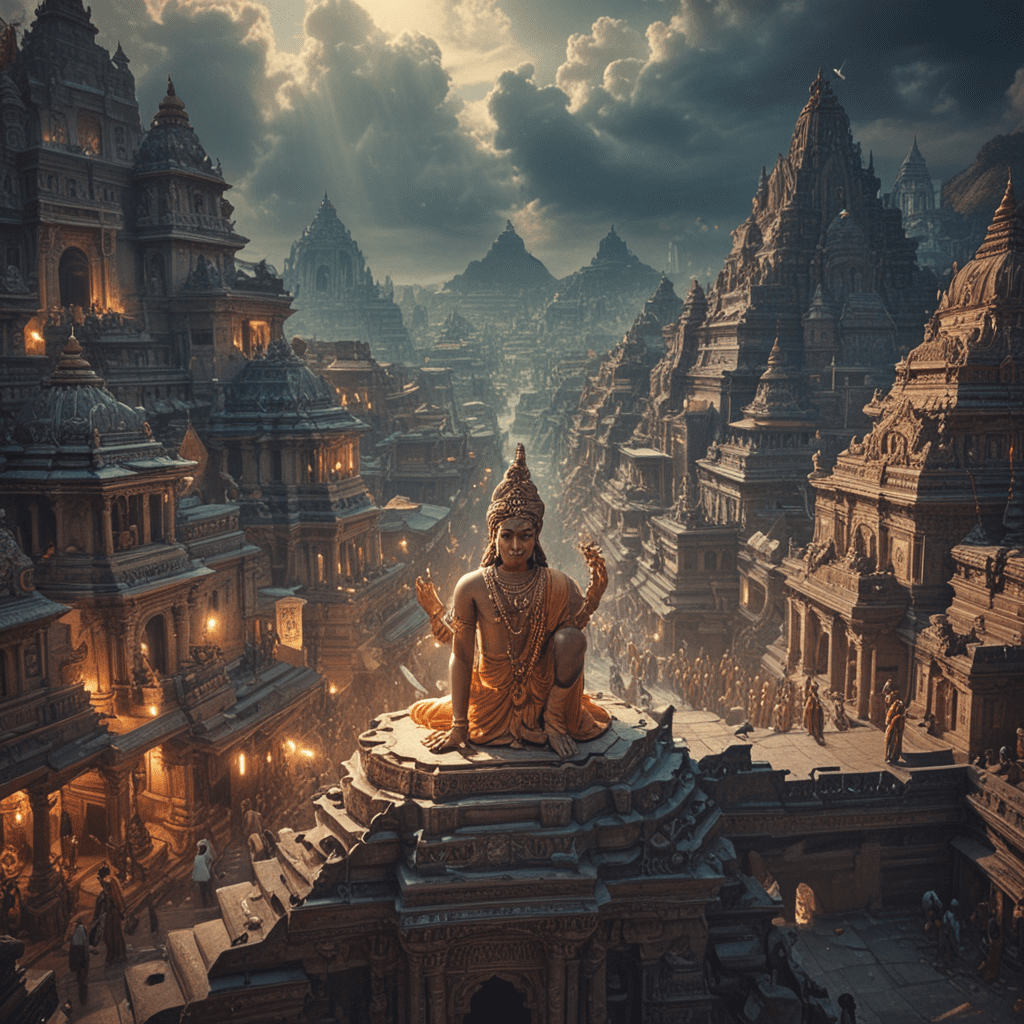Legends of the Underworld: The Myths That Shape Our Culture
I. Introduction
The concept of the underworld has fascinated civilizations for millennia, shaping cultural narratives and moral frameworks. In various cultures, the underworld serves as a realm of the dead, a space where souls traverse after death. It reflects both the fears and hopes of humanity regarding mortality, justice, and the afterlife.
Understanding the myths surrounding the underworld provides insight into the human psyche, revealing how societies process the idea of death and what lies beyond. This article will explore the concept of the underworld across different cultures, its reflection of societal values, iconic figures associated with these myths, their representation in literature and art, psychological implications, associated rituals, and their evolution in contemporary culture.
II. The Concept of the Underworld Across Cultures
Underworld beliefs vary significantly among civilizations, yet they often share common themes of judgment, afterlife journeys, and the moral implications of one’s earthly life.
A. Comparative analysis of underworld beliefs in different civilizations
- Ancient Greece: The underworld, ruled by Hades, was seen as a shadowy realm where souls resided after death. It featured various regions, including the Elysian Fields for the virtuous and Tartarus for the wicked.
- Ancient Egypt: The Duat was a complex landscape that souls navigated in the afterlife. Central to this journey was the weighing of the heart against the feather of Ma’at, determining the soul’s fate.
- Norse mythology: Hel was the realm presided over by the goddess Hel. It was a place for those who did not die in battle, reflecting the Norse valorization of martial death and the afterlife’s duality.
B. Common themes and variations in underworld mythology
Despite cultural differences, several themes recur in underworld myths:
- The journey of the soul after death
- The presence of deities or figures who guide souls
- Judgment and moral consequences based on earthly actions
III. The Underworld as a Reflection of Societal Values
Underworld myths often serve as mirrors to the ethical and moral frameworks of their respective societies.
A. Morality and ethics as depicted in underworld myths
These myths illustrate prevailing notions of right and wrong, often emphasizing virtues such as bravery, honesty, and loyalty.
B. The role of judgment and reward/punishment in shaping cultural norms
Many cultures incorporate the idea of judgment in their underworld narratives, which reinforces societal values:
- Rewarding virtuous behavior with a favorable afterlife
- Punishing wrongdoing to deter immoral actions
C. Case studies: The influence of myth on legal and social systems
In Ancient Egypt, the concept of Ma’at influenced their legal system, emphasizing truth and order, which was central to both earthly and afterlife interactions.
IV. Iconic Figures of the Underworld
Several key figures emerge within underworld myths, each representing different aspects of death and the afterlife.
A. Hades, Osiris, and Hel: Characteristics and significance
- Hades: Often misunderstood, Hades was both a god of the underworld and its ruler, embodying the inevitability of death.
- Osiris: Central to Egyptian mythology, Osiris symbolizes resurrection and the cyclical nature of life and death.
- Hel: In Norse mythology, Hel represents the fate of those who die without glory, serving as a reminder of the importance of honor in life.
B. The role of psychopomps: Guides of the souls
Psychopomps, such as Hermes in Greek mythology or Anubis in Egyptian beliefs, serve a crucial role in guiding souls to their final resting places, emphasizing the transition between life and death.
C. Exploration of lesser-known figures and their impact on folklore
Many cultures have lesser-known deities and spirits associated with the underworld, such as Charon, the ferryman of Hades, who exemplifies the concept of payment for passage in the afterlife.
V. Underworld Myths in Literature and Art
Underworld themes have profoundly influenced classical literature and visual arts, serving as a backdrop for exploring human experiences.
A. Influence of underworld themes on classical literature (e.g., Dante’s Inferno)
Dante Alighieri’s “Inferno” vividly depicts the consequences of sin through a structured underworld, influencing countless works in Western literature.
B. Representation of the underworld in visual arts throughout history
Artists like Hieronymus Bosch and Gustave Doré have captured the imagination of the underworld, often reflecting societal fears and moral lessons through their depictions.
C. Modern adaptations and reinterpretations in films and novels
Contemporary storytelling often reinterprets underworld myths, as seen in films like “The Matrix” and novels such as Neil Gaiman’s “American Gods,” blending ancient themes with modern narratives.
VI. The Psychological Impact of Underworld Myths
Underworld myths resonate deeply within the human psyche, offering archetypes that help individuals navigate their personal struggles.
A. Archetypes and their implications in Jungian psychology
Jungian theory posits that archetypes, such as the hero’s journey through the underworld, represent universal human experiences, aiding in personal transformation.
B. The underworld as a metaphor for personal struggles and transformation
Many individuals find solace in underworld myths, using them as metaphors for overcoming personal demons and achieving growth.
C. Case studies: How mythological narratives influence mental health and resilience
Therapeutic practices often incorporate mythological narratives to help clients confront and understand their struggles, fostering resilience and healing.
VII. Rituals and Practices Surrounding Underworld Beliefs
Rituals surrounding death and the afterlife provide a tangible connection to underworld myths.
A. Funerary customs and their connection to underworld mythology
Many cultures have rituals designed to honor the dead, ensuring safe passage to the underworld. For example, the ancient Egyptians practiced elaborate burial customs, including mummification.
B. Modern-day rituals inspired by ancient beliefs
Contemporary practices, such as Día de los Muertos in Mexico, celebrate the lives of the deceased, reflecting ancient beliefs in the cyclical nature of life and death.
C. The role of festivals and celebrations in honoring the dead
Festivals across cultures serve to commemorate the dead, reinforcing community bonds and shared beliefs about the afterlife.
VIII. The Evolution of Underworld Myths in Contemporary Culture
The narratives of the underworld continue to evolve, adapting to modern sensibilities and technologies.
A. The adaptation of ancient myths in modern storytelling
Modern literature and media often draw upon ancient myths, reinterpreting them to explore contemporary issues, such as identity and morality.
B. Influence of technology and media on perceptions of the underworld
With the rise of digital media, the portrayal of the underworld has diversified, reaching broader audiences and allowing for innovative interpretations.
C. The resurgence of interest in mythology in pop culture
There is a growing fascination with mythology in pop culture, evident in films, books, and television series that explore ancient themes through a modern lens.
IX. The Future of Underworld Legends
As society evolves, so too will the myths surrounding the underworld. The increasing interest in spirituality and existential questions may lead to a resurgence of these narratives, reshaping how we view life, death, and what lies beyond.
In conclusion, the legends of the underworld remain vital to our understanding of human culture, ethics, and psychology. They provide a framework for grappling with our mortality and the moral implications of our lives, ensuring that these ancient narratives continue to resonate in the contemporary world.




